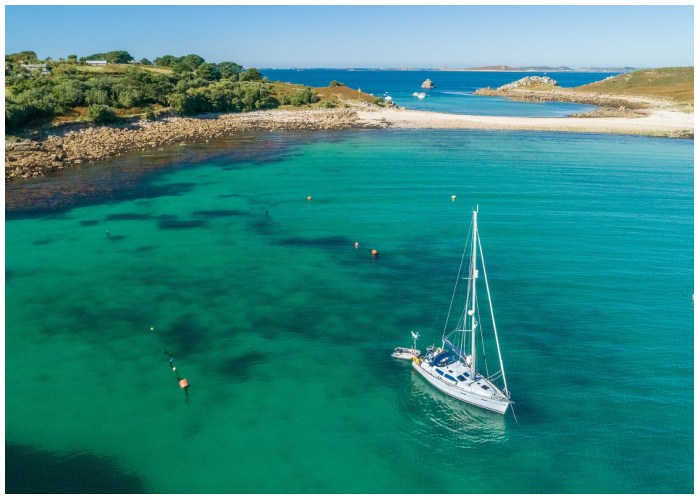If you’re planning a beach getaway in Cornwall this summer, consider venturing further to the UK’s southernmost point. The Isles of Scilly, an archipelago of 140 islands situated 28 miles off the Cornish coast, offer a unique experience. Five of these islands are inhabited, with a total population of just over 2,000 people, and the southernmost inhabited island is St. Agnes. Bathed by the warm waters of the Gulf Stream, the Isles of Scilly often feel sub-tropical, providing an exotic escape without leaving the UK.
Threatened by Climate Change
The Isles of Scilly face a significant threat from climate change. Scientists and the UK Met Office predict that sea levels will rise by one meter this century due to global heating. The Council of the Isles of Scilly warns that these islands could be the worst affected place in Britain. In extreme scenarios, experts suggest that the islands may become uninhabitable. Two smaller islands, Tean and Samson, were once inhabited but are now left to wildlife and tourists. The main island, St. Mary’s, has its highest point just 49 meters above sea level, making it highly vulnerable to coastal erosion and flooding.
Hugh Town, the largest town on the Scillies, is only slightly over three meters above sea level, putting it at significant risk of increased flooding. To address these threats, the Council of the Isles of Scilly has developed a Climate Change Action Plan, which includes millions of pounds for improving sea defenses and achieving net-zero carbon by 2030. This proactive approach aims to protect the islands and their unique ecosystems from the impacts of climate change.

Why Visit the Scilly Isles?
The Isles of Scilly have been voted the most scenic destination of outstanding natural beauty in the UK three times. Nature lovers will find dramatic coastlines, puffins nesting alongside wild grey seals, and opportunities to see sharks and dolphins. Snorkeling offers a chance to explore the stunning underwater biodiversity. The islands’ flora and fauna, threatened by climate change, are unique within the UK. Camping by the sea allows visitors to wake up to views of tropical-looking white sand beaches, providing an unforgettable experience.
Food is another highlight of the Scilly Isles, with seafood dominating the menus. Lobster, crab, and the classic fish and chips are all made with ingredients bought directly from fishermen at the harbor each morning. Menus change daily based on availability, ensuring a fresh and diverse culinary experience.
Getting to the Isles of Scilly
Traveling to the Isles of Scilly is an adventure in itself. You can fly by helicopter or plane, arrive by sea on the Scillonian III ferry, or as part of a cruise. Penzance Helicopters operates year-round flights from Penzance to St. Mary’s or Tresco Island. Fixed-wing aircraft flights are available from Exeter (March to October), Newquay (from May), and Land’s End (year-round), landing on St. Mary’s with Isles of Scilly Travel. The Scillonian III passenger ferry runs from March to November, departing Penzance at 9:15 am and arriving on St. Mary’s at 12 pm, then returning at 4:30 pm to reach Penzance by 7:15 pm.
St. Mary’s Harbour and Isles of Scilly Airport also welcome independent travelers arriving by private plane or yacht. For island hopping, numerous trips are available each week. St. Mary’s Boatmen’s Association operates tripper boats from St. Mary’s, and other services include St. Agnes Boating, Tresco Boat Services, Endeavour Rib Service, and Seaquest Glass Bottom Boat.
The Isles of Scilly offer a unique blend of natural beauty, wildlife, and a touch of tropical charm, making it a must-visit destination. With its warm climate, stunning landscapes, and fresh seafood, the Isles of Scilly provide an unforgettable experience while highlighting the urgent need for climate action to preserve this remarkable part of the UK.